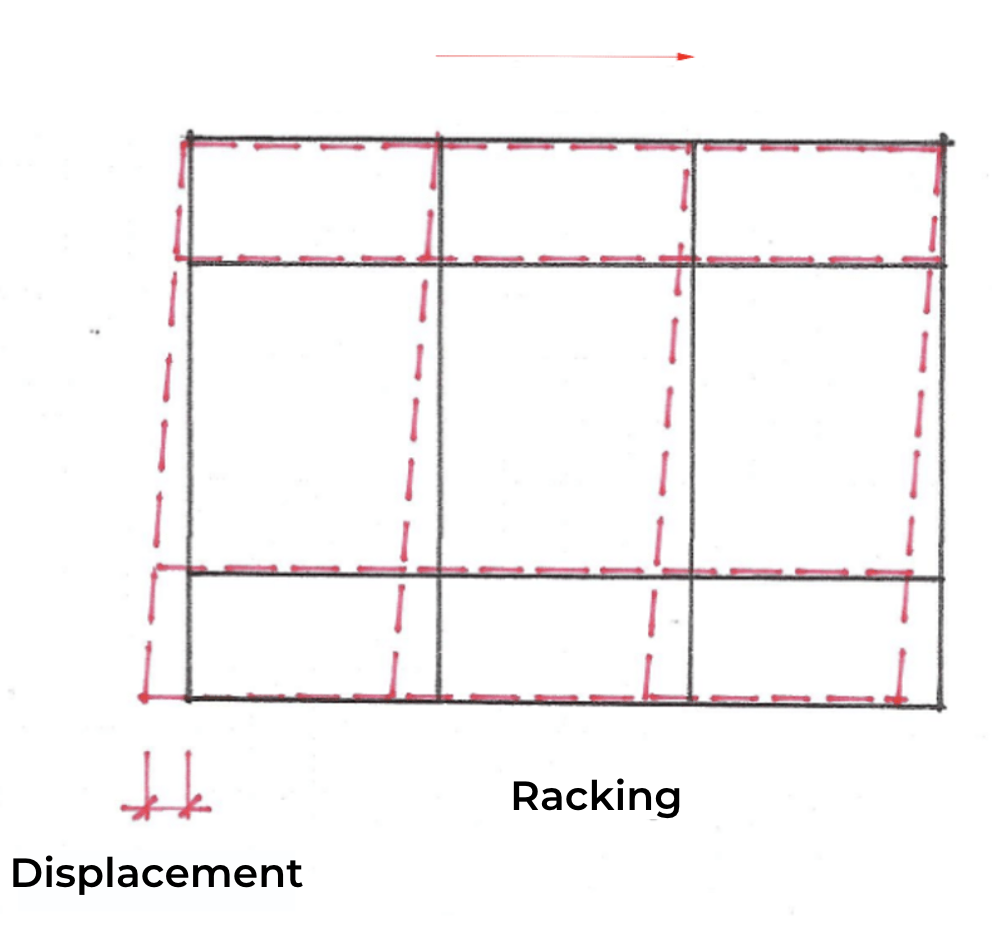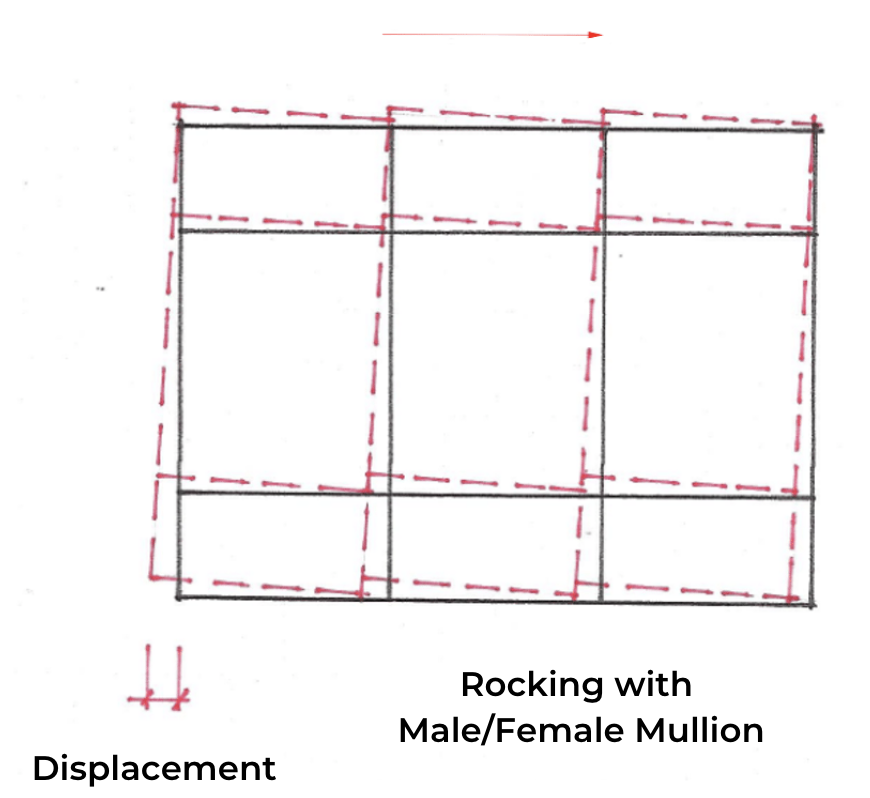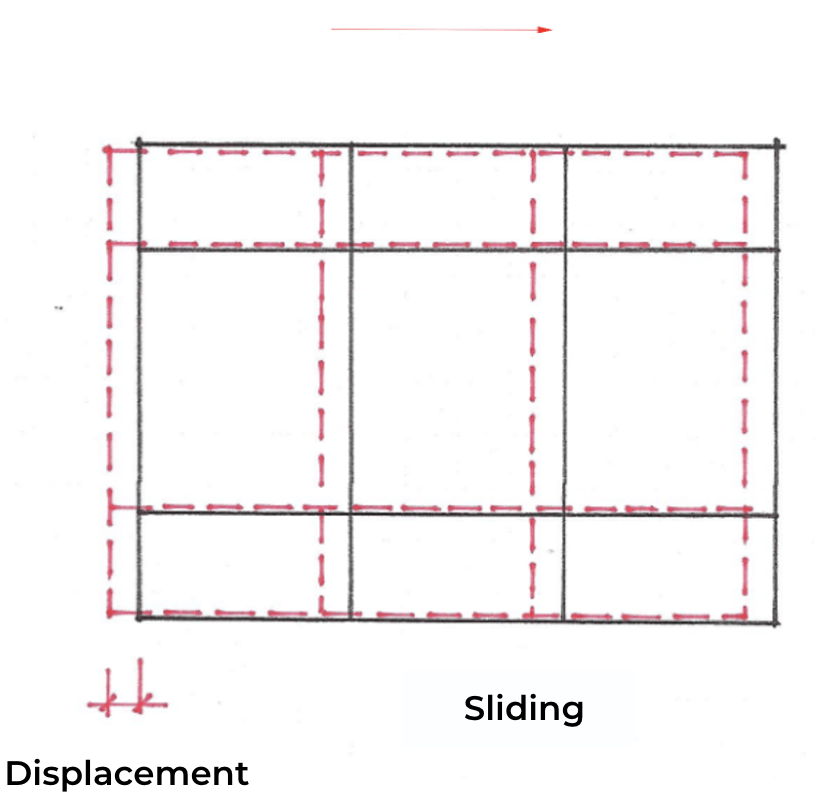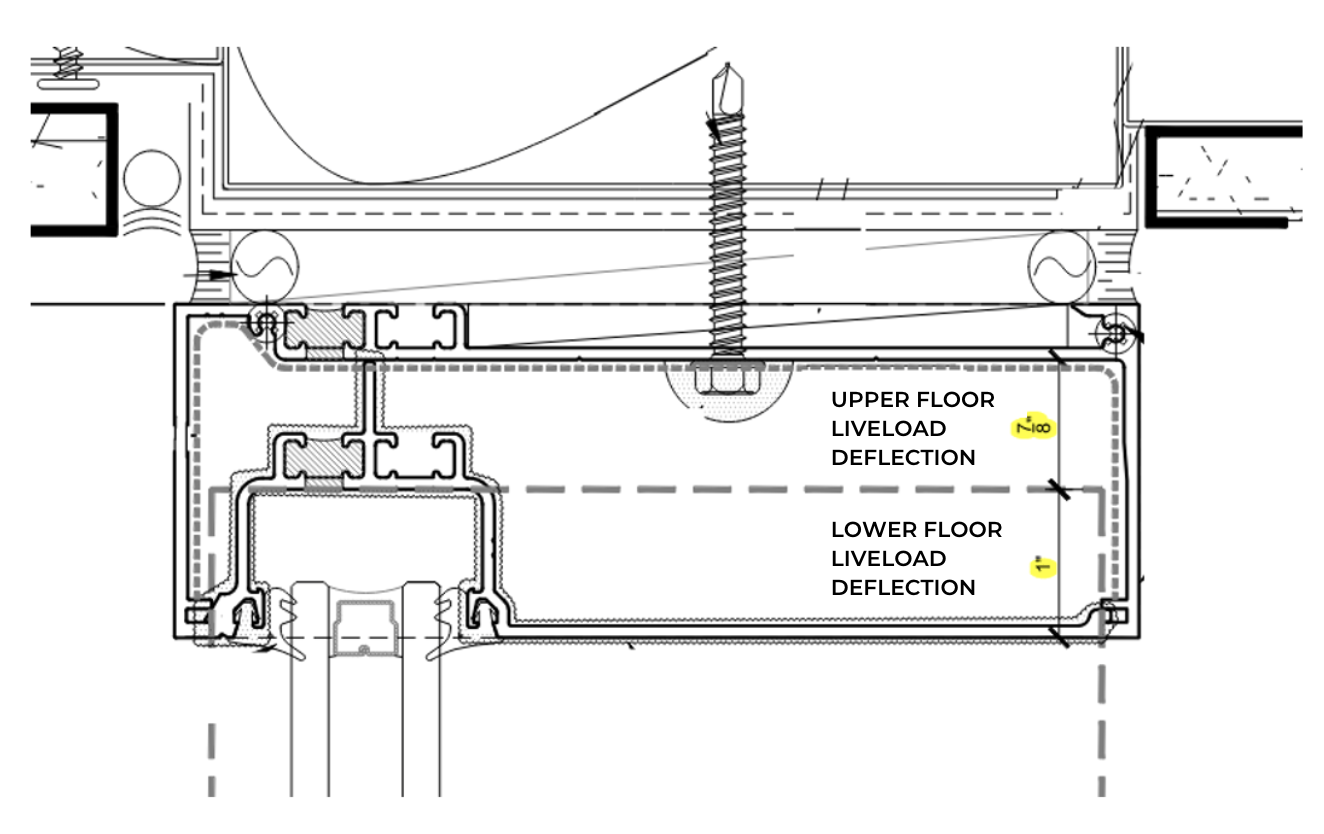The performance of the exterior façade not only depends upon the systems, but also the ability of the systems to accommodate movement of the structure and still perform. In addition, it is the responsibility of all façade contractors to coordinate the movement of their systems with other adjacent systems.
The movement of the structural frame is generally specified in the structural drawings but can also be present in the individual exterior systems specifications. These values are not always coordinated with the criteria provided in the structural drawings, so it’s important to seek clarification if a conflict exists. For glazing systems, examples of this specification language can be found under PERFORMANCE REQUIREMENTS, as follows.
- General: Provide glazed aluminum systems, including anchorage, capable of withstanding, without failure, the effects of the following:
- Movements of supporting structure indicated on Drawings including, but not limited to, story drift, twist, column shortening, long-term creep, and deflection from uniformly distributed and concentrated live loads.
- Seismic Performance: Glazed aluminum curtain walls shall withstand the effects of earthquake motions determined in accordance with ASCE/SEI 7.
- Lateral Building Interstory Movement: As indicated on Structural Drawings, and as specified in Division 01 Section “Exterior Enclosure Performance Requirements”.
- Vertical Interstory Movement: Complying with criteria for passing based on building occupancy type when tested in accordance with AAMA 501.7 at design displacement. Combine load cases per ASCE 7, as applicable.
- Live Load Perimeter Slab Deflection after Curtainwall Installation: Minimum of L/360, or 0.500 inch.
- Column Shortening, Building Creep, And Twist: 1/16 inch.
- Total Curtain Wall Stack Joint Dimension: 1 inch.
For this Technical Bulletin, we will focus on the effects of Lateral Interstory Drift and Live Load.
Lateral Interstory Drift is the reaction of the structure to wind forces or a seismic event, where floors move in opposing directions. The displacements are provided by the structural engineer as a percentage of the floor height under two criteria, Elastic or Inelastic response. The greater the floor height, the greater the displacement acting upon the wall system, left or right from a vertical position. As an example, a 14’-0” floor to floor height with a 1.5% displacement would be 168” X .015 or 2.52”
Generally, the two criteria have different acceptable results, with the lesser movement of Elastic passing if the façade system continues to perform to the specified values following an event, and the greater movement of Inelastic passing if the components of the façade do not create a life-safety concern from falling materials.
All conditions begin with a coordinated horizontal “drift line”, established for the benefit of all exterior trades. For glazing systems, the lateral drift is generally accommodated singularly or in a combination of three ways; racking, rocking or sliding.

Racking is common among stick framing systems and results in the framing going diagonal, forming a parallelogram. The important issue in using this method of compliance is the utilization of anti-walk blocks and that there is adequate clearance of the glass to frame.

Rocking is common among unitized assemblies and allows the frame to rotate up while mostly maintaining its rectangular or square position. These frames require mating vertical and horizontal engagements as well as anti-walk blocks, and may still have some degree of racking.

Sliding is again common in unitized assemblies where the frame is allowed to travel with the floor displacement, mostly maintaining its rectangular or square position. These also require the use of anti-walk blocks and will normally require more of the movement to be taken in the mating engagements or sealant joints.
Live Loads are temporary loads that are applied to the structure on and off over the life of the structure. The live load deflection is calculated by the reaction of the floor slabs to the applied load, generally at the center point of the beam spanning between columns. A typical live load requirement is L/360, or the span divided by 360. In the case of a beam spanning 20’-0”, the allowable deflection would be 240” divided by 360, or .66 inches.
In multi-story structures, designs need to consider a plus dimension and a minus dimension. This is in consideration of opposing floors reacting under deflection, while maintaining the minimum coverage of engagements.

Live load deflection should also be designed into the other façade systems, such as nesting stud tracks in rainscreen applications. It is also common to find systems that span between columns, such as precast panels, which may not require the accommodation of center of beam deflection. Again, evaluation of all façade systems is necessary for a coordinated solution.
Understanding these fundamentals allows for the proper evaluation of system applications and their ability to comply with performance requirements.
